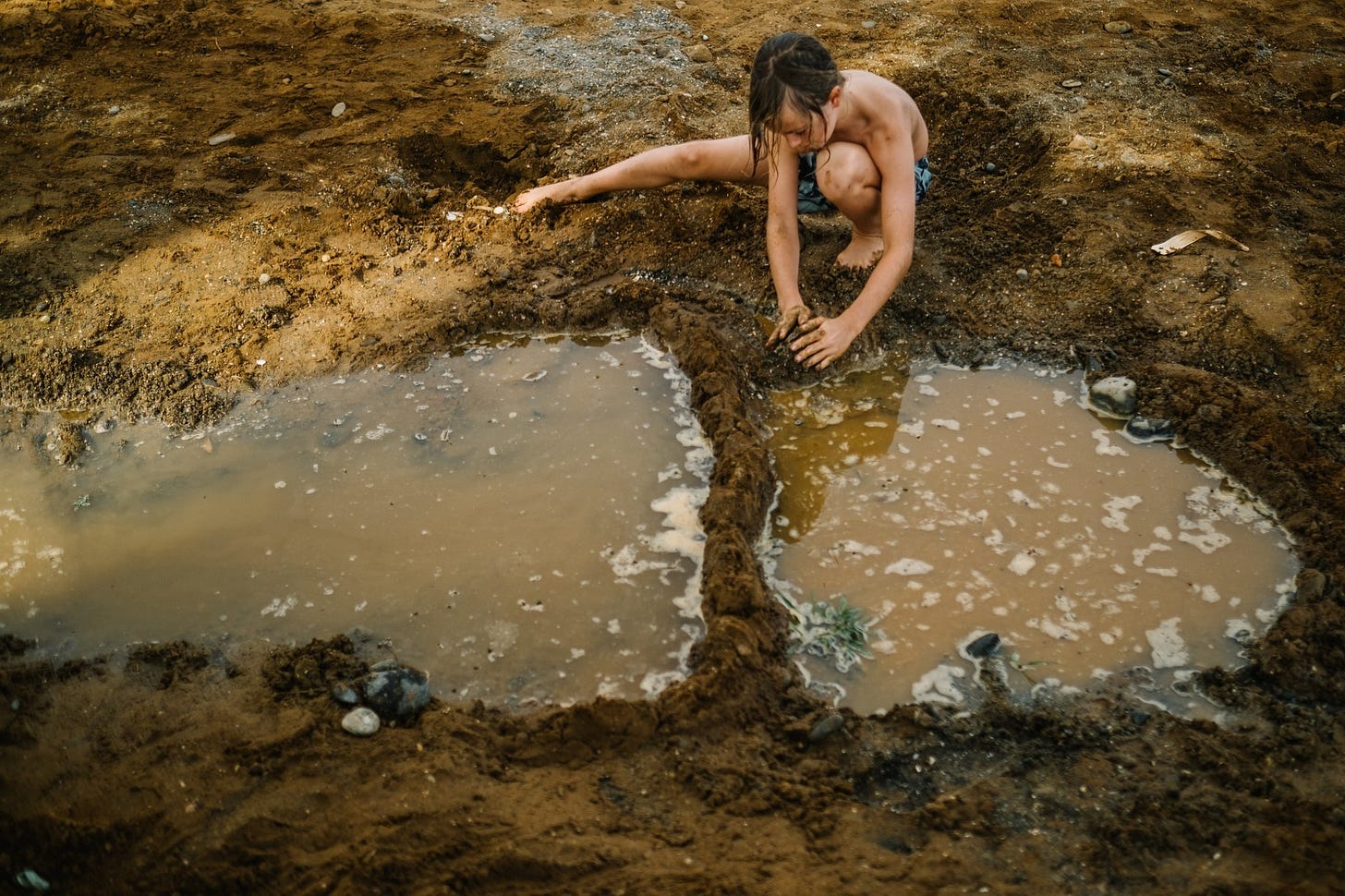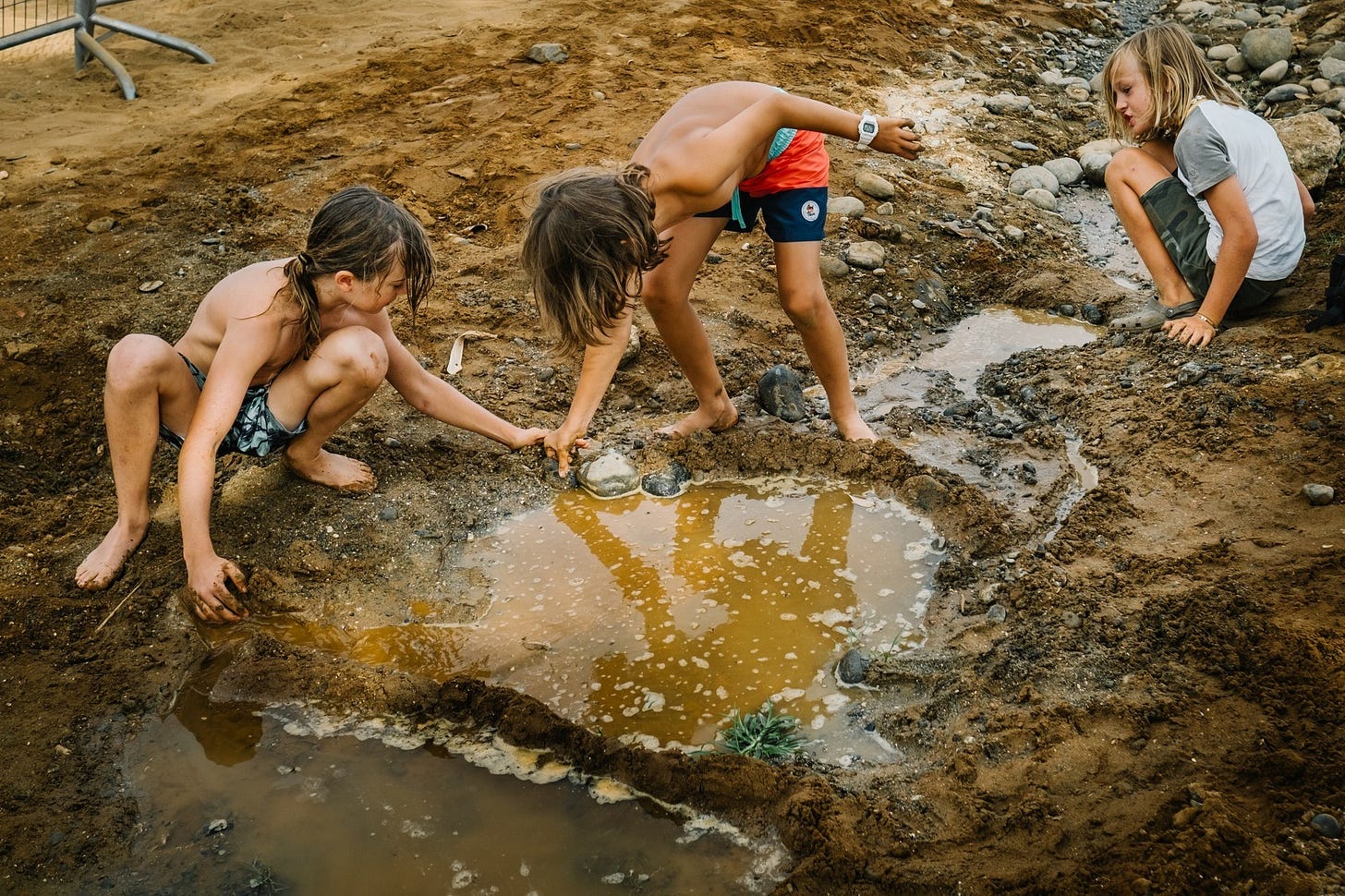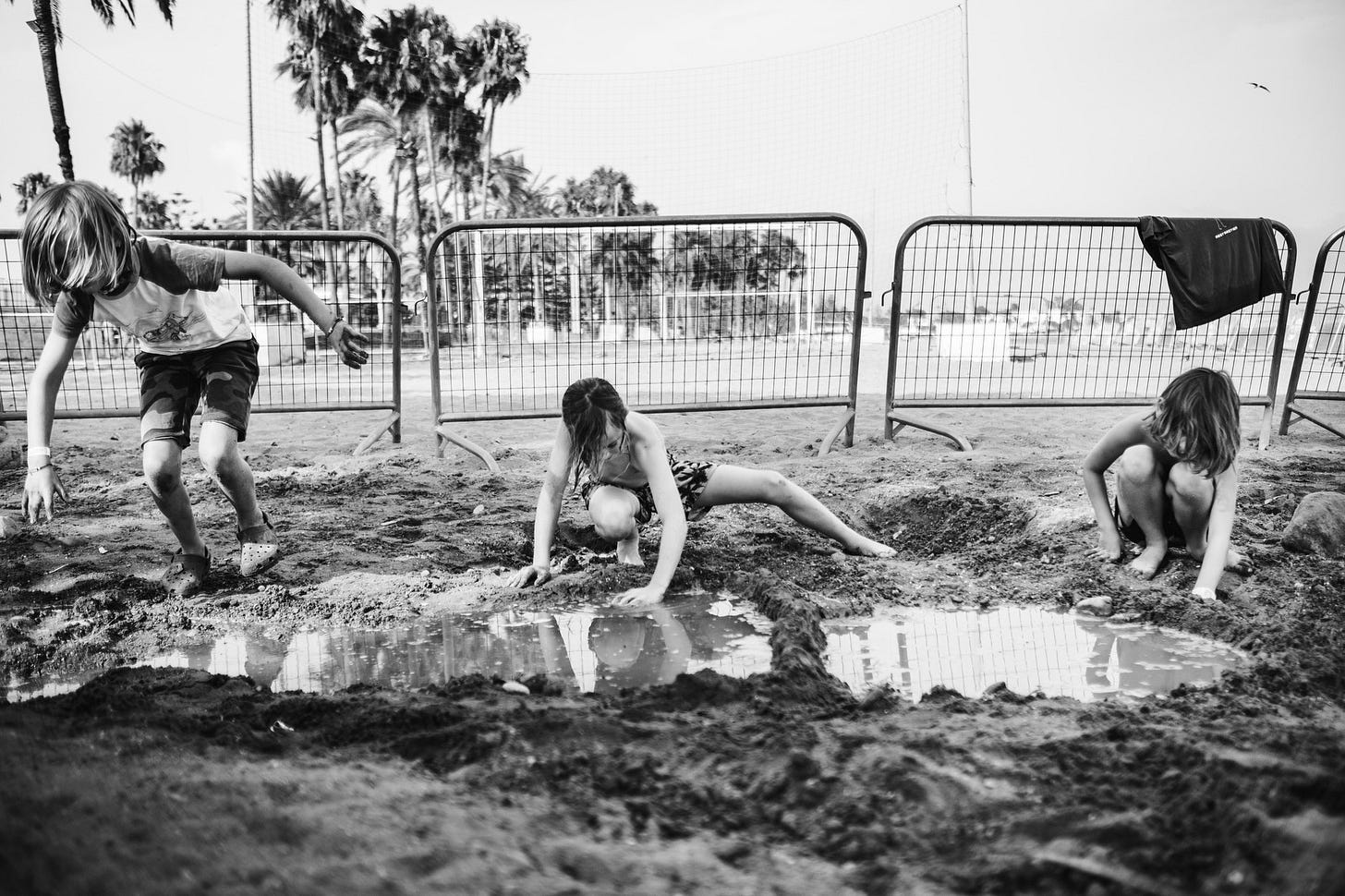What is? What if? What's next?
The Art of Rediscovering Yourself. From Managing to Living
We're being conditioned from day one, shaped by educational systems, societal expectations, workplace demands - like taming wild animals.
I'm not trying to criticize everything about this process, but I think we leave a lot of money on the table, creativity-wise, human potential-wise.
But this constant molding and disciplining and pushing against our nature instead of working with it tends to backfire, and it usually picks the worst time possible.
That said, the backfire happens in somewhat predictable directions.
You either get angry and fight back, rebel against the whole system. Or if you can't accept that anger, then you better be prepared to get sad. Really, really sad. Or numb.
And somewhere between the anger and the sadness sits anxiety - that constant state of shifting expectations, never quite knowing which version of yourself you're supposed to be today.
When Success Feels Like Death
Most of my life, at least from a certain point, I wasn't really living - I was managing myself within my life. Managing different aspects, different expectations, different versions of myself. And I got good at it. In many ways, I succeeded. The problem was that there came a point when everything looked great from the outside AND I hated it.
It's a pretty common thing when you look back. It's almost like the surgery was a success, but the patient died.
That's when the self-sabotage kicks in. Something in you starts saying "no, I'm not doing that anymore." And if you try to hammer it down, discipline it away, it finds other ways to let you know this part of you is really unhappy. You lose motivation. Get depressed. Get physically sick. The intention-action gap looks like Colorado Canyon. You keep setting goals you don't meet, telling yourself you want certain things but then not doing them.
It feels like you're two different people. Which isn't quite true - there are simply different subsets of selves, like different partitions on your hard drive.
Sometimes they're at odds, and when they're not aligned, living becomes this constant battle. One wants to go left, another wants to go right, a third says "I'm not moving at all." And then another voice jumps in: "You lazy bastard, move your ass. You're a loser."
Picture a house full of people just fighting. Our usual approach is to give more power to one of those voices, let it rule the others. But they're all under the same roof.
The War Inside
There's this creative part of you that wants to create for no particular reason, because it just does. It's playful, explorative, curious - think of it as your childlike self. Then there's the judgmental voice that says "well, if you're going to do that, at least make money from it" OR "that's just plain silly. Stop it NOW."
You can't win that fight. Do something creative, and one part criticizes it as not good enough. Don't do anything, and another part calls you lazy. The fight has to stop being a fight.
We don't often think about ourselves as a bunch of different parts constantly at odds. We don't realize we're constantly narrating our lives, like a GPS tracking device telling us who we are, what our position is, what we can and cannot do. That voice isn't entirely you - it's your ego, with all its weird, conflicting parts.
When these parts are misaligned, it shows up everywhere. You start projects but quit them. You're motivated, then unmotivated. You want something, then you don't. What the hell, right?
The usual advice is "set better goals, get more discipline, find inspiration." But what if we tried listening instead? What do these parts want? What are they trying to communicate? Whatever you resist persists, and if you keep ignoring them, they're going to get really mean. They'll throw tantrums.
The Rebel Without a Cause
Here's the thing about that rebel part of you - it's so focused on getting your attention by fighting against everything that when you finally say "okay, let's talk, what do you want?" it's thrown off guard. It might not even know, because it was so busy fighting it never thought about what it actually wanted.
That's even scarier. Now that you have the microphone, you don't know what to sing.
I see a lot of people in this state.
They know they've had enough, something needs to change, but they're so disconnected from their true wants and needs they don't even know what those would be. Plus, after years of telling themselves not to trust themselves, that they're a source of danger and crazy ideas and self-sabotage, they've made themselves the problem.
How do you get out of that? And of course, we want to do it fast, efficiently, so we can package it nicely and display it for others to admire. "Yeah, I had this little crisis, but look, I'm good now." It almost never works like that.
The Messy Middle
First you acknowledge the need. Then there's peeling off a lot of old paint, dissolving old structures. That's destabilizing. Not fun. It feels uncertain, and you need protection from the elements, but usually you don't have it.
You can't jump from one identity to another, though some people try to repackage themselves. I don't think that works. You need to grow into someone else, and that takes time and certain conditions need to be met.
You need to reimagine what you want, learn yourself again. And to do any of that, you need to start trusting yourself a little bit. Give yourself more credit. Give yourself time.
Time and space are essential. There will be moments when nothing seems to be working, when you grow impatient thinking "okay, the clock is ticking, I gave myself space to reimagine but it's just not happening." The manager or parent within kicks in again. It's an unnerving space to be in.
The Art of Following
The first step is getting those different parts to start communicating with each other. Sometimes you need to separate them temporarily - you're not going to put two mad dogs in one cage and see which survives. It's about harmonizing them, listening to them, not having an agenda.
That's really hard when we're so goal and achievement driven. There's this sense of urgency, wanting to fix it as soon as possible, get over it. But the more we rush the process, the trickier it becomes. There are so many things we need to learn, relearn and unlearn (the last one is often the hardest). We need to get to know each other.
Funny thing -the more we rush it, the longer it takes. It's like kids when they're little - nothing seems to happen for months, then all of a sudden they're having conversations with you. Or like bamboo - nothing happens on the surface but a lot is happening underneath, then it shoots into the air and grows incredibly fast.
Lost & Found
I see this as a rediscovery process. A lot of people try to reinvent themselves, but I think that's a trap, a top-down approach. You don't invent anything - you rediscover things and follow them. That’s emergence, a bottom-up process.
That's why I call it a Montessori approach. For a while, you have to trust yourself and your natural inclinations. Let yourself do things without an agenda, without trying to make something out of it. You follow your curiosity, your impulses, your interests. This following is really unnerving, especially when you're watching the clock.
I see people pick up something new - the kid in them starts playing with it - and immediately the adult jumps in: "Oh, maybe this is it! Maybe we can push it in this direction, get a course on this. Let’s get you a nice container for it." And the kid says "nah" and moves on to something else. The adult part really wants to solve the uncertainty and ambiguity, because it's not an easy state to be in.
But exploration isn't linear or goal-oriented. The kid needs permission to pick things up and put them down without justification, to be genuinely curious without turning it into a career plan.
The Adult Playground
Since we're not kids anymore, the question becomes: how do we do this skillfully while still paying the bills? How do we let the kid do their thing without handing them the car keys?
We need those different parts to take care of each other, but we also need a safe place to play. Because that's how we learn, how we move. We need a playground for adults - a safe place where we can try things without an agenda, where we explore both what is and what if.
The skill is creating boundaries that protect rather than constrain. Like a playground with fences - not to limit the children but to keep them safe while they explore freely. The bills still need to get paid, responsibilities still need to be met, but there's this protected zone where the curious, playful part can experiment without putting the whole life structure at risk.
It requires negotiation between the different parts. The responsible adult saying "here's the container, here's what we need to maintain" and the playful part saying "here's where I get to explore without justifying everything."
A Little Structure, A Hell of a Lot of Safety
This combination is crucial - we need a little bit of structure and a hell of a lot of safety to start moving.
If we've spent years not trusting ourselves, if we've internalized all those critical voices telling us we're the source of our problems, then we need enormous amounts of safety to even begin.
The structure can be minimal - just enough to keep the practical world functioning - but the safety has to be vast and deep.
Safety to mess around without it meaning anything. Safety to be inconsistent.
Safety to follow something and then drop it without that being evidence of character flaws.
Safety to be curious about things that don't make logical sense.
Safety to not know where something is leading.
Most of us have the structure part figured out - we know how to make lists, set boundaries, manage responsibilities. But that oceanic level of safety? That's much harder to create, especially when we're doing it for ourselves. We're usually much better at providing unconditional acceptance for others than we are at giving it to ourselves.
The Blank Canvas
Here's what makes this crisis so powerful - most of the time we live reactively. We react to needs, wants, expectations, demands. But when you finally ask yourself "what do I want?" - when you need to step away from reactivity and into creativity -now that you can imagine a house from scratch, blank canvas, let's reimagine things - it's terrifying.
Freedom is scary. There are so many options, and even just imagining things means deciding. There's a reason when you have a kid, you don't ask open questions like "what would you like for breakfast?" or "what do you want to wear?" You say "porridge or cereal? This shirt or that one?" Then it's easier.
We often know what we really don't want, so we pick the other thing. But when you're trying to reimagine yourself - and I don't think it's reinventing, it's reimagining (bottom-up emergence) - you're faced with "well, I don't know."
How do you go about this? It's really difficult to come up with things out of thin air. You have to see something to make a decision. You need to try things. Because otherwise, it's just inventing shit again.
The Loop of False Solutions
The feeling of being lost, not knowing, that uncertainty is so frustrating that we resist our resistance. We fight back against that uncomfortable feeling; not just the reality but how it makes us feel. We jump into different things just to not feel that discomfort.
And we lie to ourselves constantly. "Oh yeah, maybe on Monday I felt lost, but now I'm all good because I found this thing." Then we're back to square one. It's a loop.
The first step is admitting: I have no idea. I have no freaking idea who I am and what I want. It's not the easiest thing to say, but it's honest. And there's something liberating about finally stopping the pretense that you've got it all figured out.
Most of our suffering around this comes from fighting the not-knowing instead of accepting it as a necessary stage. We treat uncertainty like a problem to solve quickly rather than a space to inhabit skillfully.
When the Kid Has Been Too Quiet
Here's what I found - if the kid inside us has been really tamed, and it's been silent for years, even when you finally ask what it wants and hand over the mic, it will most likely be too scared to speak up.
You know how some kids are rebels - they kick and scream and try to get attention that way. But others just quietly have their hand raised for ages. They've lost hope that they'll ever be picked, and when they finally are, they're like "oh, what do I want to say? I don't know."
Or they might tell you something suitable, something they think you might like - the sanitized, stripped-down version of their actual dreams. The safe answer.
But if you allow it, if you really suspend judgment and don't punish them for having crazy ideas, they will warm up eventually. They'll start telling you more and more because they feel safe. They'll have more ideas, make different connections. All of a sudden they tap into something very powerful - maybe this, maybe this, maybe that. And boom.
Some of it's going to be crazy. And you don't need to implement every idea. It's just about movement, about not being in that state of mental constipation where you're not getting anything done. The goal isn't to act on everything, but to get the creative flow moving again.
This is where the following comes in - not following some predetermined path, but following breadcrumbs. You can't imagine the whole meal, but you can notice what makes you curious right now. What makes you lean in slightly. What makes you think "huh, that's interesting."
The reimagining happens through encountering, not through thinking. You bump into things, try them on, see how they feel. Most won't fit, and that's information too. But you can't know from your head what's going to resonate with your whole self.
The Adult Teenager Phase
This reimagining part, this no longer/not yet stage, is often like becoming a teenager again - just in an adult life. It's a wild ride. They want to be this one day, something completely different another day. They tend to do stupid things, but then they're shockingly wise sometimes. It feels like it's never going to end, and all sorts of scary visions come to mind.
But if we give them a safe space, a bit of unconditional love, maybe drink more chamomile tea - or wine - in the evenings while keeping our fingers crossed, most of the time they eventually turn out just fine.
Just like with actual teenagers, the key is not to panic when they want to dye their hair purple or decide they're going to be a marine biologist this week and a poet the next. The exploration is the point. The trying on of different identities isn't confusion - it's research.
Moving from Reaction to Response
The shift from reactive living to responsive living is subtle but massive. Reactive is immediate, automatic, based on what's urgent or expected. Responsive means there's a pause, a moment where you check in: "What does this situation actually call for?"
But to develop that responsiveness, you need practice recognizing what you actually feel, what you actually want. And that takes time in the playground we talked about - space to experiment without commitment, to try things on without having to marry them.
The goal isn't to eliminate the different parts or force them into perfect harmony. It's to create enough space and safety for them to coexist, maybe even collaborate. To trust that the organic unfolding has its own wisdom, even when it doesn't make rational sense.
It's messy work. Uncertain work. But it's the difference between managing your life and actually living it.





Closing the gap between intention and action is a real superpower.
This speaks to me on so many levels! Life has become so much better since my parts (especially the childlike ones) started being heard and collaborating rather than just being managed.